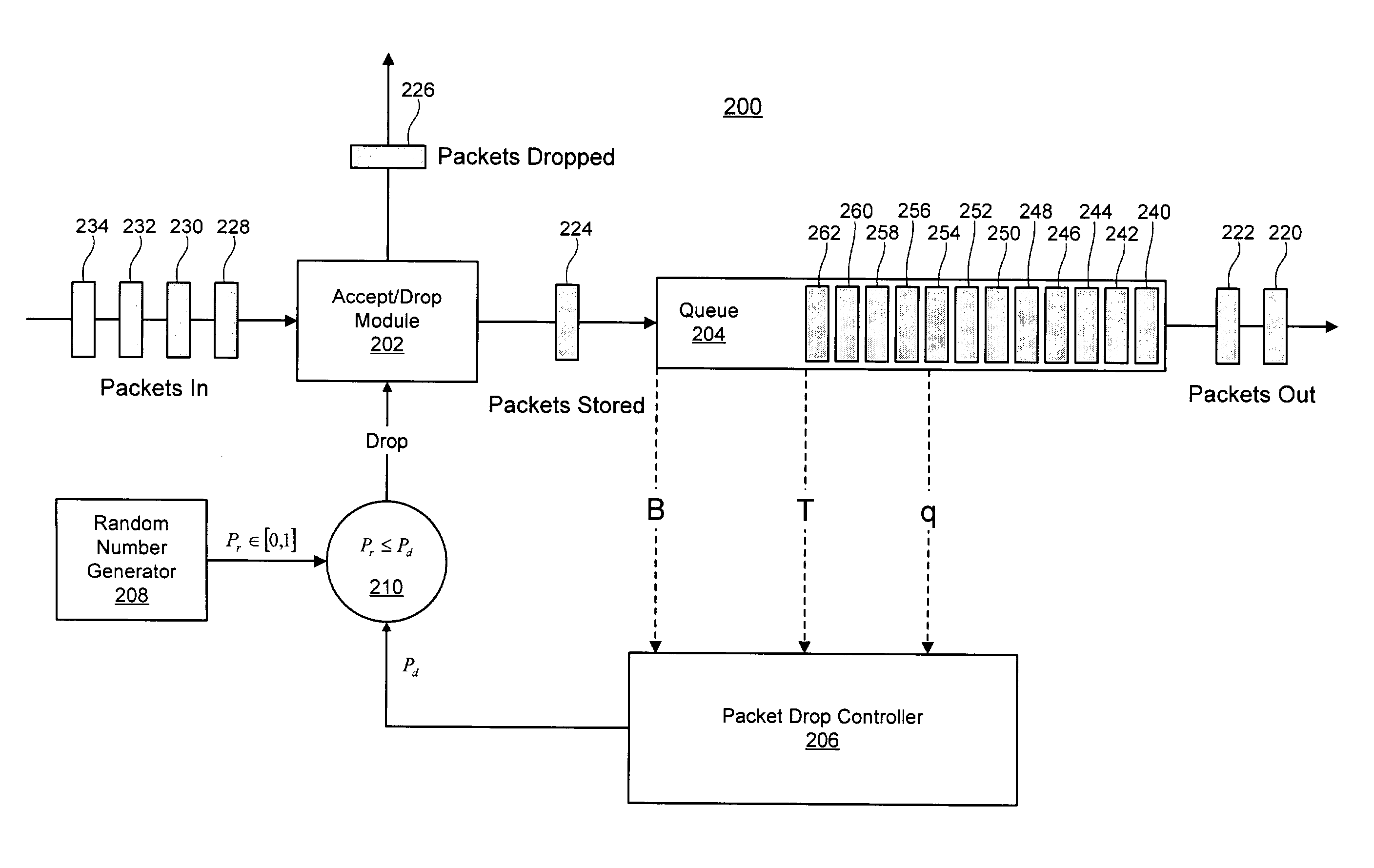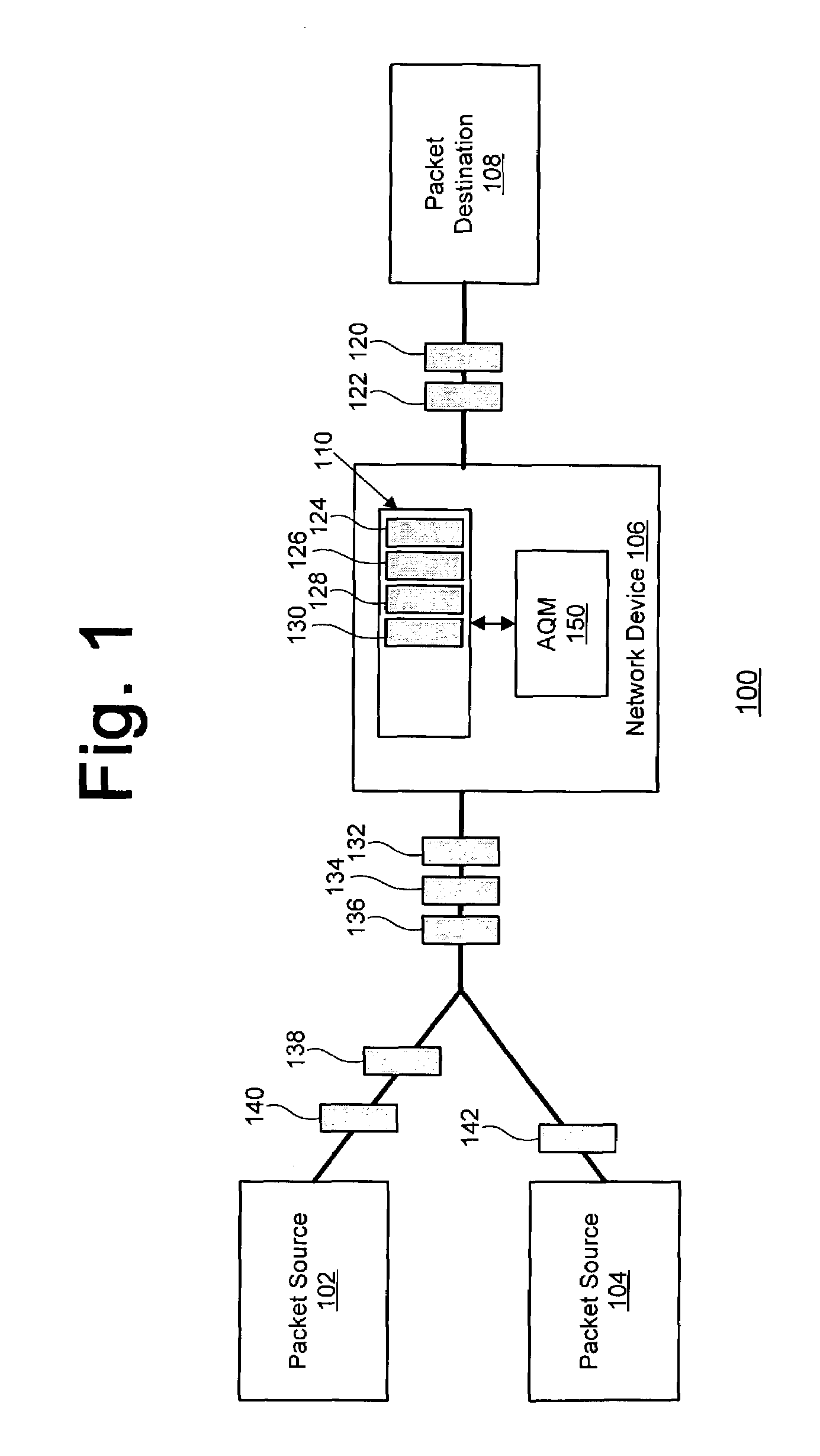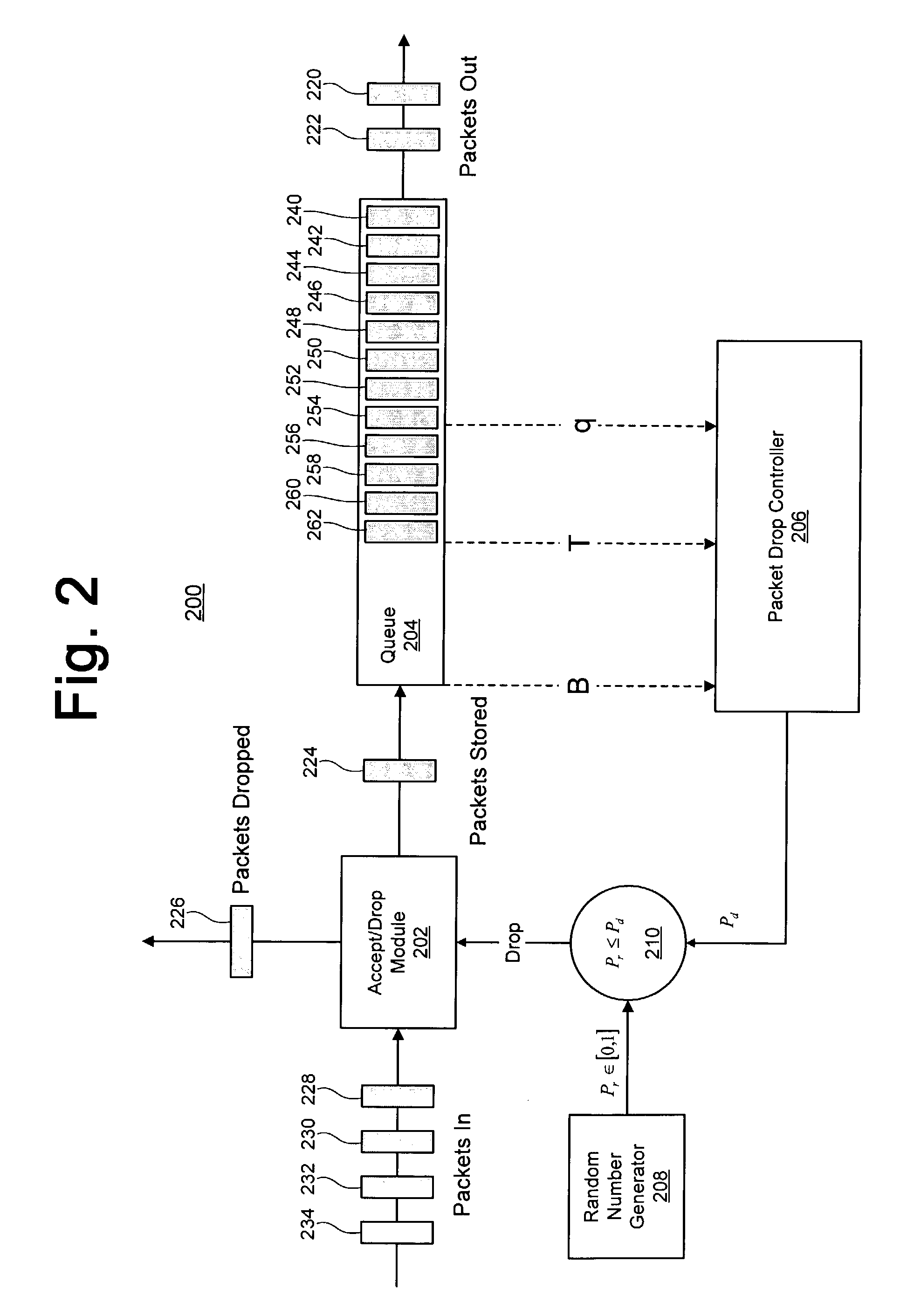Constant gain controller for active queue management
a controller and constant gain technology, applied in the field of buffer management, can solve problems such as not providing optimal queue management, and achieve the effect of constant gain factor
- Summary
- Abstract
- Description
- Claims
- Application Information
AI Technical Summary
Benefits of technology
Problems solved by technology
Method used
Image
Examples
case 2
[0106] a120 (which, equivalently, in terms of the network parameters, is (R0C+2N)20C). The function M(zj) has a minimum at:
[0107]ⅆM(z)ⅆz=4z3+2R02(a12-2a0)z=0⇒zmin=R0a0-a122.EQ.51
The function M(zj) is monotonically decreasing in the interval [0,zmin) and monotonically increasing in the interval [zmin,∞). The zj, j odd, that minimizes zmin−zj subject to zj≦zmin is denoted as zod, where od is an odd natural number. zev, where ev is an even natural number or zero, denotes the zj, j even or zero, that minimizes zmin−zj subject to zj≦zmin. These conditions may be expressed as follows:
[0108]od=argminjodd{zmin-zj}subjecttozmin-zj>_0EQ.52ev=argminjeven{zmin-zj}subjecttozmin-zj>_0.EQ.53
The bound for kc in EQ. 46 can then be expressed as:
[0109]maxj=od,od+2{-a1zjkR0sin(zj)}<kc<minj=ev,ev+2{-a1zjkR0sin(zj)}EQ.54
where for odd values of j, sin(zj)>0 and for even values of j, sin(zj)<0.
In terms of the network parameters, EQ. 54 may be expresse...
PUM
 Login to View More
Login to View More Abstract
Description
Claims
Application Information
 Login to View More
Login to View More - R&D
- Intellectual Property
- Life Sciences
- Materials
- Tech Scout
- Unparalleled Data Quality
- Higher Quality Content
- 60% Fewer Hallucinations
Browse by: Latest US Patents, China's latest patents, Technical Efficacy Thesaurus, Application Domain, Technology Topic, Popular Technical Reports.
© 2025 PatSnap. All rights reserved.Legal|Privacy policy|Modern Slavery Act Transparency Statement|Sitemap|About US| Contact US: help@patsnap.com



